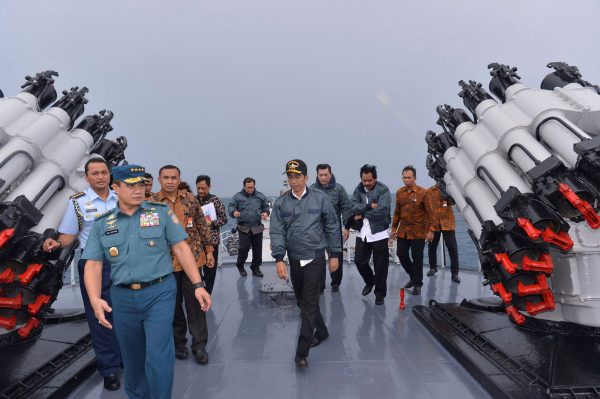Tightly interlinked with this rise in defence spending is an increase in arms procurements. Several Southeast Asian countries are going on arms spending sprees and buying new frigates, tanks, helicopters, fighter jets and submarines. Vietnam’s arms imports increased by almost 700 per cent over the last decade, shifting Hanoi from the world’s 43rd largest arms buyer to the top 10.
Numerous media outlets and observers have interpreted these changes in the region’s arms dynamics as indicators of an arms race in Southeast Asia. The prospect of an arms race is interlinked with the broader context in which these changes are taking place: growing strategic uncertainty over China’s rise, anxiety about US withdrawal from the region and the persistence of various flashpoints between ASEAN countries.
But if one moves away from gazing at the absolute numbers, a more nuanced picture emerges. The value of ASEAN defence spending measured as a share of ASEAN’s combined GDP has actually remained fairly constant over the last decade. The defence expenditures of several big-spender countries measured as a share of their national GDP have in some cases stagnated (Indonesia) or even slightly decreased (Singapore) over this period.
It is also telling to look at what Southeast Asian countries are buying. A lot of money is being spent on modernising weapons systems that have been barely functional for years. Take the Indonesian navy, for example, where observers estimate that up to a third of all navy ships are not seaworthy. And the Philippines’ recent acquisition of a dozen new South Korean fighter jets looks much less impressive if one considers that the last functioning fighter jet in the country was retired in 2005.
Taking these factors into account, equating the changing arms dynamics of Southeast Asia with an arms race appears somewhat hyperbolic. While intra-ASEAN disagreements do flare up occasionally, there is no lasting antagonism between two or more states in the region. Nor are these states upgrading militarily in anticipation of or in reaction to the arms procurements of other countries.
However, while changes in Southeast Asia’s regional arms dynamics remain below the threshold of an arms race, they do amount to more than a maintenance of the status quo.
The littoral countries of the South China Sea have committed large chunks of their military spending to upgrading their naval capacity, including in maritime aviation, mobile anti-ship missile systems and maritime surveillance.
For a country like Vietnam, the recent purchase of six Russian submarines does not equate to obtaining military superiority vis-a-vis other regional powers. Yet the purchase enables Hanoi to begin pursuing asymmetrical Anti-Access/Area Denial (A2/AD) strategies to curtail the freedom of movement and strategic options of other powers. So in some sectors, the rearmament taking place is indeed of a competitive nature and is shifting some aspects of the regional military balance.
These observable changes in Southeast Asia’s arms dynamics are in line with two wider trends.
Many of the region’s militaries are undergoing a strategic reorientation away from an almost exclusive focus on counter-insurgency and domestic stability towards external defence, power projection and conventional warfare. This trend is linked to growing uncertainty in Southeast Asia over China’s rise as well as the possible impact on regional security of US–China geostrategic competition.
Southeast Asia is also marred by the ongoing militarisation of regional conflicts (such as in the South China Sea), coupled with national strategic cultures that perceive military weakness as detrimental to national security. Domestic factors also come into play here: Thailand drastically boosted its defence spending after the military coups of 2006 and 2014, and Myanmar has pointed to the multitude of armed insurgent groups inside the country to legitimise recent spikes in its defence spending.
While numerous studies cast doubt on the existence of a causal link between a rise in defence spending and the outbreak of military conflict, the defence upgrading taking place in Southeast Asia certainly contributes to growing regional tensions.
New trends in arms spending are heightening mutual distrust about the intentions and power ambitions of neighbouring states. This distrust is intensified by a lack of effective arms control and transparency mechanisms. There is no regional agreement on arms control, and numerous states in the region have repeatedly circumvented international agreements such as the UN Register of Conventional Arms or the Arms Trade Treaty. And the enhancement of available weapon systems makes the potential outcomes of military conflict more severe. Many of the weapons recently acquired are, simply put, more potent and deadly.
If current trends in Southeast Asian defence spending continue, the changing arms dynamics could have a lasting negative impact on regional security and stability for the foreseeable future.
Felix Heiduk is Senior Associate in the Asia Division of the German Institute for International and Security Affairs, Berlin.

